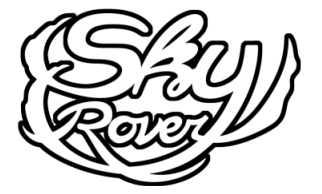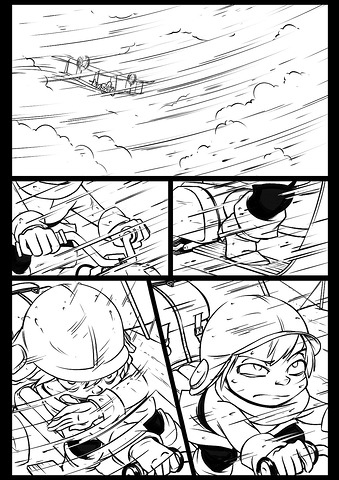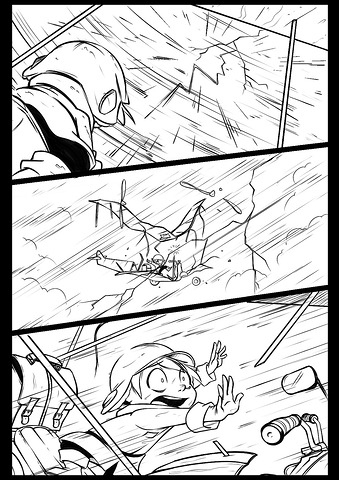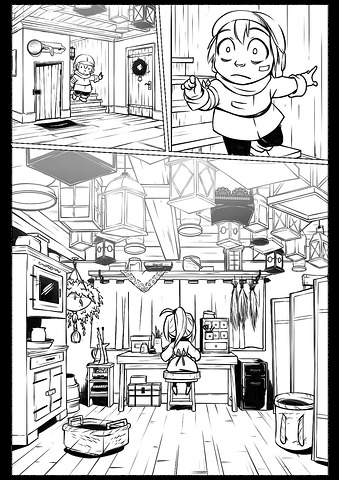WIP continued – Inking process
Last post I started writing about my work process for a comic page and comic chapter. I talked about thumbnail and 1st rough pass. Next is inking process. This part is pretty straight forward as it consists of “tracing out the drawing”. But it’s really easy to fall into a few pitfalls, and loose part of the essence that made the rough drawing so lively. Most of my inking techniques I learned come from the time I did assisting and clean-up for animation drawings. Even if animation and comic drawings serve different purposes, the things I keep in mind when inking/cleaning are the same.
- The line art can never be stronger than the rough drawing underneath. I know it’s hard to wait to see that completed drawing in all its glory, but it really does pay to spend time here and draw a really solid rough. For me, a rough is more of a thought process than an actual drawing. This is where I sculpt the shapes. Even though it can be so messy only me can read it, it essence is there none the less. It acts as a reminder of my intentions when I reach the inking process. And it’s a huge helper for next tip, which is:
- Always “feel” what shape you are tracing. What I mean by this is, every time you draw a line, always try to keep in mind what underlying shape this line is representing. I really like to think of drawing the same way as sculpting. When I draw, there is always a part of my brain that constantly figures out how the shapes would feel like if I’d put my hands around them. It really helps me choose the right curves. Have you tried to feel your drawing too?
- Don’t look at the tip of your pencil, look at its destination! If you want a frank, steady line, the best way to achieve this is to look ahead of the tip of your pencil, where you want it to go and not directly at the tip. If you only look at the tip of the pencil, your line will be more jiggly. It’s a bit like driving a car. Your driving course will be steadier if you look far away. Of course, now with Cintiq, there are tools that have line correction algorithms implemented that really helps with line steadiness, but I think it only compensate for loss of control you have when you draw on a glassy surface, such as a Cintiq.
- Don’t draw everything! Inking is all about precising and choosing. The end of a curved line holds a lot of information about the type of the shape it’s suggesting. Also, more often than we think, omitting some details leads to a much better line art! You don’t have to close every line, draw every little detail. Just a suggestion of a shape, and your reader will fill the gap themselves. Often, that empty “forgotten” space becomes a very powerful tool to attain beauty in a drawing.
For those wondering, I used Clip Studio Paint for this comic.
Here are a few example of inked pages before I added shadows and other finishing touches:
Stay tuned for page 19!!















